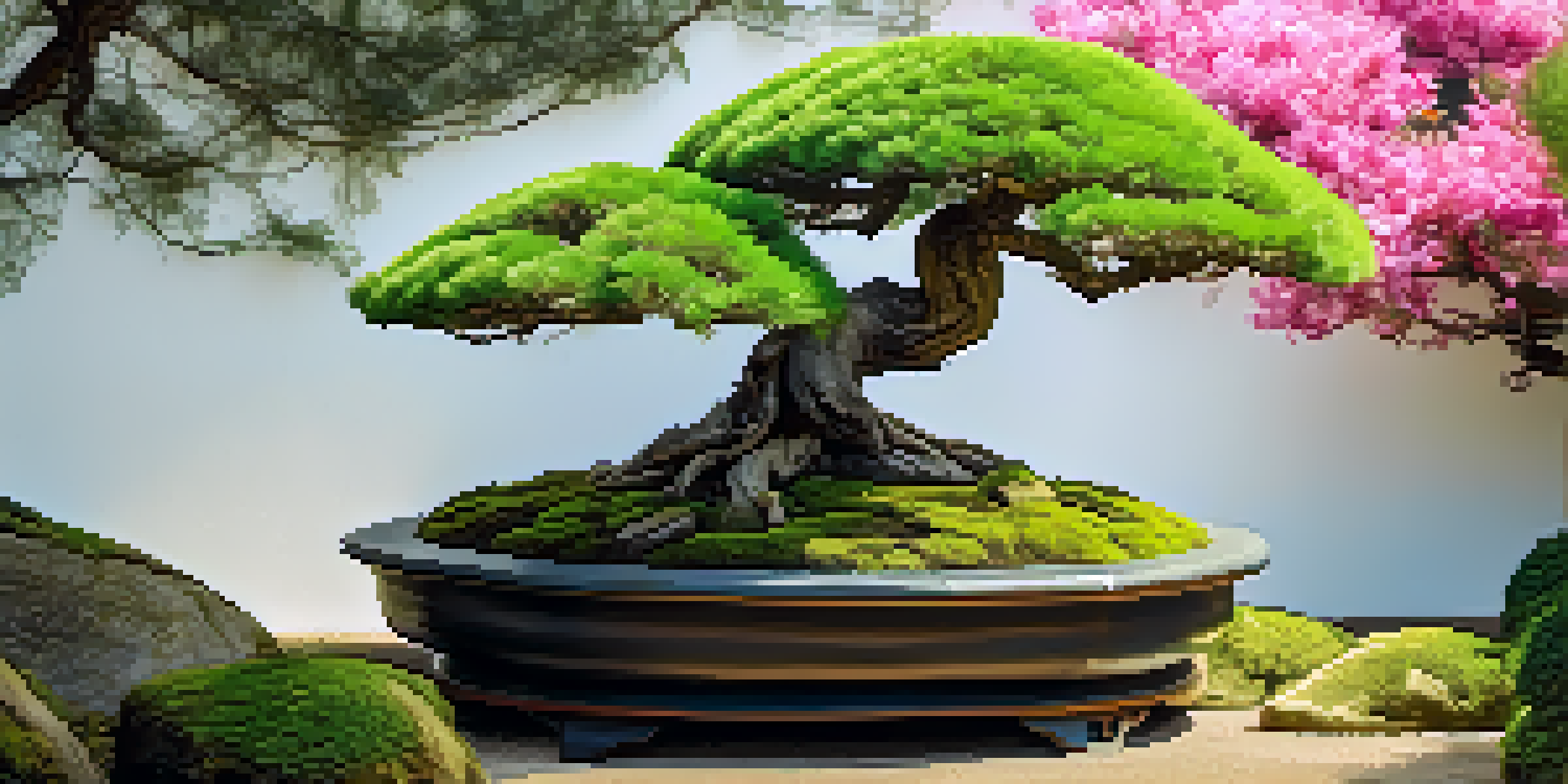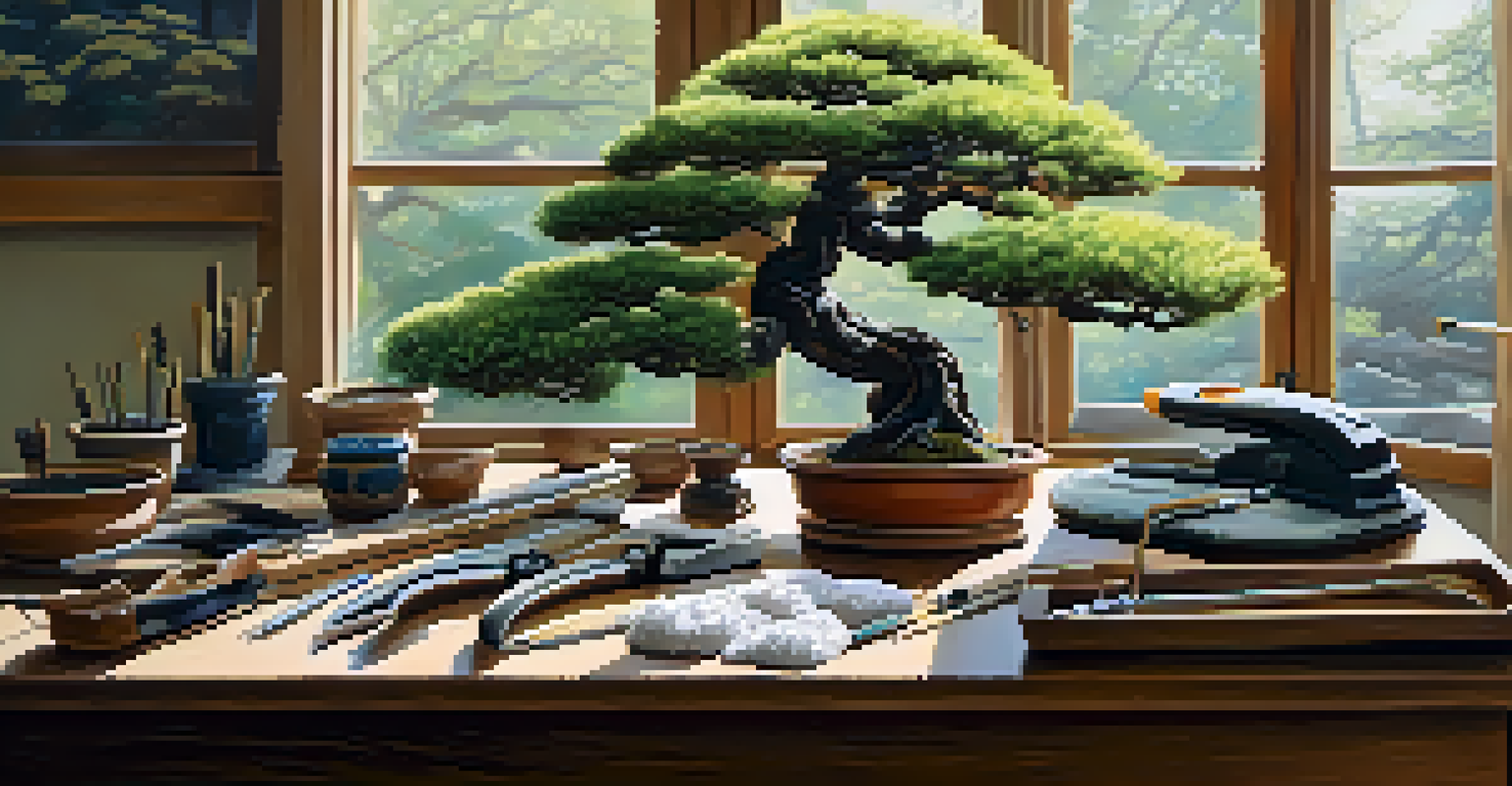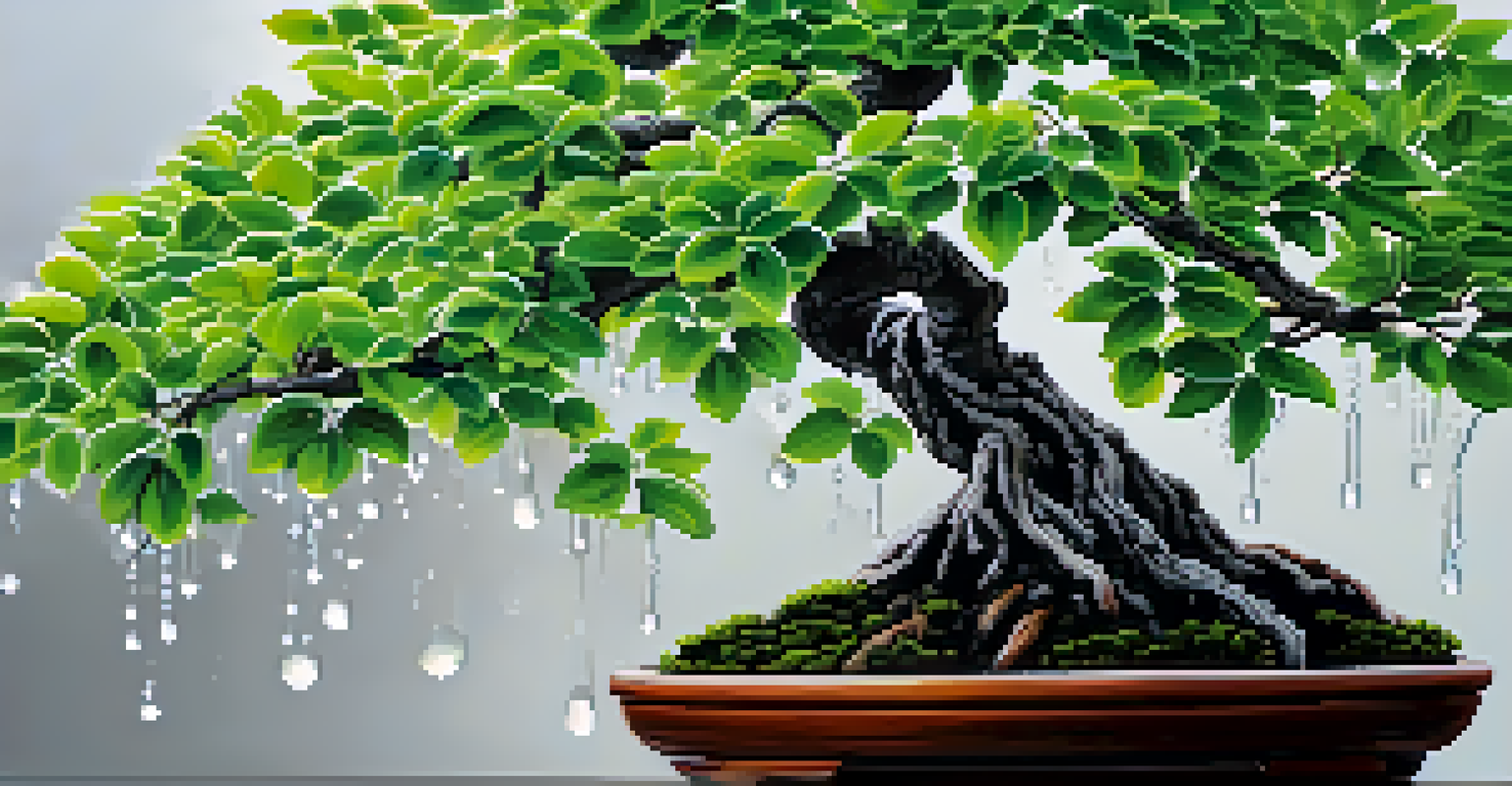The Art of Pruning: Shaping Your Bonsai for Aesthetic Appeal

Understanding the Basics of Bonsai Pruning Techniques
Bonsai pruning is both an art and a science, aimed at shaping the tree while promoting healthy growth. To start, it’s essential to understand the basic techniques involved, such as pinching, trimming, and wiring. Each method plays a crucial role depending on the desired shape and style of your bonsai tree.
The greatest gift of the garden is the restoration of the five senses.
Pinching involves removing new growth tips to encourage bushier foliage, while trimming refers to cutting back branches to maintain the overall size and shape. Wiring, on the other hand, is used to guide branches into desired positions for aesthetic appeal. Mastering these techniques takes practice, but their impact on your bonsai can be profound.
As you delve into these methods, remember that patience is key. Bonsai is about time and care; the trees you prune today will flourish beautifully with your nurturing touch.
Choosing the Right Time for Pruning Your Bonsai
Timing is everything when it comes to pruning bonsai trees. The best times to prune are typically in early spring or late summer, as these seasons coincide with the tree’s growth cycles. Pruning during these periods allows the tree to heal quickly and encourages new growth.

In spring, trees are coming out of dormancy and are eager to grow, making it a perfect time to shape them. Conversely, late summer pruning helps maintain the tree's shape while still allowing for a healthy fall growth cycle. However, it’s crucial to avoid pruning during harsh weather conditions, as this can stress the tree.
Bonsai Pruning Techniques Explained
Understanding techniques like pinching, trimming, and wiring is essential for shaping your bonsai tree effectively.
By being mindful of the seasons, you can ensure that your bonsai thrives and showcases its best aesthetic qualities throughout the year.
Recognizing the Different Styles of Bonsai Aesthetics
Bonsai trees can be shaped in various distinct styles, each with its own aesthetic appeal. Some popular styles include formal upright, informal upright, and cascading, each reflecting different natural forms. Understanding these styles can help you decide on the best approach for your bonsai.
Nature does not hurry, yet everything is accomplished.
For example, the formal upright style features a straight trunk and symmetrical branches, evoking a sense of stability. In contrast, the cascading style mimics trees growing naturally on cliffs, with branches that droop downwards. Exploring these styles can inspire your creativity and help you express your artistic vision.
Ultimately, the style you choose should resonate with your personal taste and the characteristics of the tree itself, allowing you to create a unique piece of living art.
Tools of the Trade: Essential Pruning Tools for Bonsai
Having the right tools is essential for successful bonsai pruning. Key tools include sharp, clean pruning shears, concave cutters, and wire cutters, each serving a specific purpose in shaping your tree. Using the right equipment not only makes the task easier but also helps ensure clean cuts that promote healthy growth.
Pruning shears are perfect for trimming branches and leaves, while concave cutters are designed to create clean wounds that heal nicely. Wire cutters come in handy when adjusting the positioning of branches without damaging them. Investing in quality tools can greatly enhance your bonsai care routine.
Timing is Key for Pruning
Pruning your bonsai at the right times, such as early spring or late summer, promotes healing and encourages healthy growth.
Remember, a well-maintained toolset reflects your commitment to the art of bonsai, making each pruning session more enjoyable and effective.
Pruning Techniques for Enhancing Branch Structure
A well-structured branch system is crucial for the overall aesthetics of your bonsai. To achieve this, focus on pruning techniques that encourage a balanced distribution of branches. This involves selectively removing branches that compete for space or grow inward, allowing for an open and airy structure.
As you prune, consider the tree's natural habit and strive to enhance its inherent beauty. By following the natural lines of the tree, you can create a more harmonious appearance that mimics the beauty of nature. It’s like sculpting—every cut should enhance the visual flow of the tree.
Over time, you'll develop an eye for recognizing which branches to keep and which to remove, leading to a stunning and well-proportioned bonsai.
The Role of Foliage in Bonsai Aesthetic Appeal
Foliage plays a significant role in the overall aesthetic of your bonsai tree. The density and arrangement of leaves can enhance the visual appeal, creating a lush, vibrant look that captures attention. Regular pruning of foliage not only shapes the tree but also promotes healthier growth, leading to a fuller appearance.
When pruning foliage, take care to maintain a balance between the top and bottom of the tree. This ensures that sunlight can reach all parts of the bonsai, promoting even growth. Think of it like a haircut; the goal is to create a look that feels natural and well-groomed.
Post-Pruning Care for Your Bonsai
Providing adequate water, light, and nutrients after pruning is crucial for your bonsai's recovery and continued beauty.
By mastering the art of foliage management, you'll be able to create a bonsai that not only looks beautiful but also thrives under your care.
Caring for Your Bonsai Post-Pruning for Lasting Beauty
After you’ve finished pruning, the work doesn’t stop there; your bonsai needs special care to recover and flourish. Post-pruning, ensure your tree receives adequate water and light to support its healing process. Healthy trees are more resilient and better able to bounce back after pruning.
Consider applying a light fertilizer to provide essential nutrients as the tree begins to grow again. However, avoid over-fertilizing, as this can stress the tree. Monitoring your bonsai closely during this recovery period is essential for ensuring it remains healthy and vibrant.

By providing thoughtful care after pruning, you set the stage for continued growth and beauty, making your bonsai a true masterpiece.